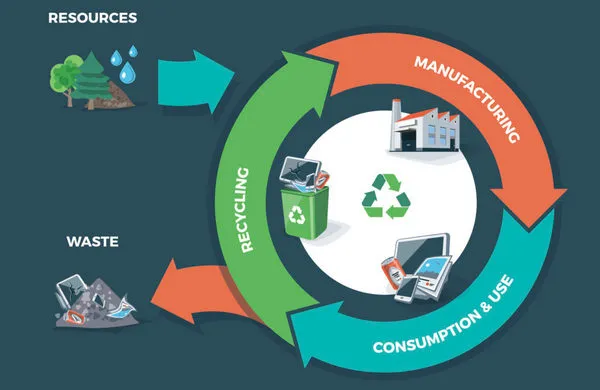The textile industry is a significant contributor to the global economy, providing employment and generating revenue for many countries. However, the traditional linear model of textile production, where resources are extracted, transformed into products, and eventually disposed of, has serious impacts on the environment and human health. To address these challenges, the concept of sustainability and circularity in textiles has gained widespread attention in recent years.
Sustainability in textiles refers to the responsible use of resources and the reduction of environmental impacts throughout the entire lifecycle of a product. This includes reducing the use of hazardous chemicals, conserving water, reducing waste, and using renewable energy sources. Circularity, on the other hand, refers to the closed loop of material flows, where waste and by-products are reutilized or recycled to reduce the extraction of new raw materials.
The Indian government has taken several measures to promote sustainable and circular practices in the textile industry. The Ministry of Textiles has launched several initiatives on this. One such initiative taken up by the Textiles Committee, Ministry of Textiles, sponsored by the United Nations Environmental Program (UNEP) is running a campaign on “Enhancing Sustainability & Circularity in Textiles” to minimise the negative environmental impacts of the Indian textile industry by promoting sustainable practices and mainstream knowledge of circular production best practices in the textile and apparel sector
The campaign involves bringing about behavioural change in “Youth” to wean them away from fast fashion in favour of more sustainable, environmental and resource friendly behaviour through positive messaging.
They organised a competition to collect collaterals like reels, infographics, and slogans for the social media campaign. My creations won prizes in both the categories of reels as well as infographics.
The Infographic shown above, created by me, won the first prize in the Infographics category. It is based on all the ways a person can choose Slow Fashion over Fast Fashion and increase Circularity and Sustainability of a textile. The infographic shows various ways, like thrifting, upcycling, washing less often etc., by which each and every person can do their bit to adopt slow fashion. It also tries to break the stereotype that slow fashion and being sustainable is unaffordable and expensive. It conveys to people that by adopting these simple, easy and pocket-friendly ways, they can effectively contribute to sustainability and circularity of textiles. Not just these, there are many more ways of choosing sustainable fashion.
The main tagline “Go Slow”, is a familiar slogan to people and hence easier to keep in mind. The only difference here is that it is in the context of fashion. “Go Slow” refers to adopting slow fashion over fast fashion, by inculcating various habits and choosing better with regard to apparel and fashion
The Reel is based on how a person can increase the lifecycle of a garment by adding value to it, by repairing it, by means of embroidery, patchwork etc. and hence contribute to the environment, and also, in turn, benefit by having a garment as good as new. The practice of repairing garments by means of various methods like embroidery has been an age-old practice in India. The famous embroidery technique, Kantha embroidery, was initially a way of using old and ragged cloth. It is not surprising that India has always had a tradition of reuse and recycling. But over time, with the onset of fast fashion and ever-changing trends propagated by brands for monetary profits, people’s mindset started to shift towards buying and discarding clothes as and when the trend changed or they simply got bored of it. People simply did not want to repeat outfits. The slogan at the end of the reel saying, “ It’s time to Rewire, It’s time to rEw,,ear”, propagates the idea of going back to our roots and rewiring our brains to rewear the clothes that we already have, and increase the lifecycle of the same, by also repairing them, if need be, and giving them a new look by various methods mentioned above.
In conclusion, the textile industry in India has the potential to play a significant role in promoting sustainability and circularity. By embracing sustainable and circular practices, the industry can reduce its environmental impacts, conserve resources, and contribute to a more sustainable future.
By: Smriti Sohal, Student, NIFT, Bengaluru

